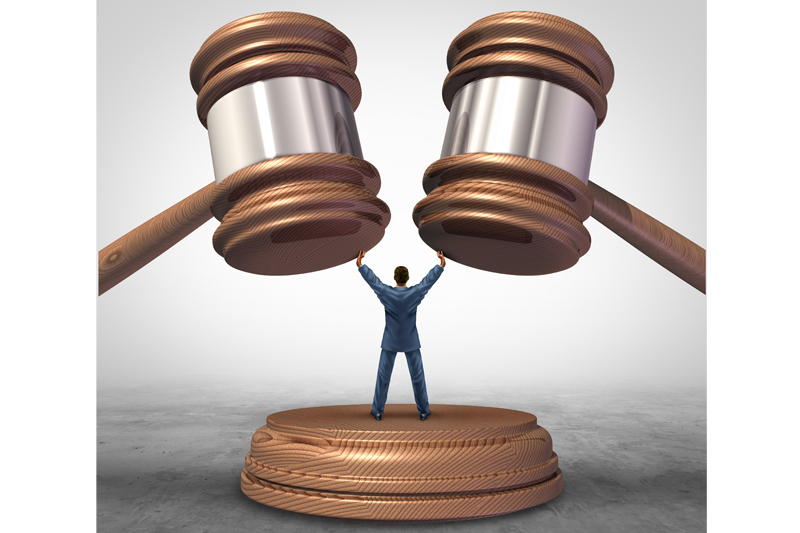
The Motor Ombudsman is the automotive dispute resolution body. Fully impartial, it is the first and only ombudsman to be dedicated to the motor industry, helping to regulate the sector through its comprehensive Chartered Trading Standards Institute (CTSI)-approved Codes of Practice. In this Special Report, the organisation tells PMM what it has to offer independent garages.
The Codes, which cover the entire customer purchase and ownership experience, are a comprehensive set of operating guidelines that have been designed to allow businesses to operate to even higher standards, and deliver exemplary customer service and workmanship. They also form the foundation of The Motor Ombudsman’s in-house Alternative Dispute Resolution (ADR) service, which helps motorists and businesses to resolve disputes quickly and fairly without the need for often costly and stressful legal action.
The three most common types of service and repair disputes
In the first four months of 2018 alone, The Motor Ombudsman handled more than 4,000 consumer contacts and raised more than 300 cases relating to a service and repair issue. The three most prominent customer concerns from January to April 2018 arose as a result of the standard of work (accounting for 25% of Service and Repair Code breaches), the competency and approach of staff (20% of breaches) and the booking-in of a vehicle (10% of breaches). These will now be examined in turn.
1. Standard of work
A poor standard of work can manifest itself in various forms and is the biggest cause of consumer disputes when it comes to routine maintenance or an ad hoc repair at a garage. These can include failing to accurately diagnose a problem, forgetting to carry out part of a service or causing additional faults with the vehicle. The Motor Ombudsman recently saw a case where an individual had taken their car to a garage for some diagnostic work. The initial visit was for two hours, and a repair was carried out to the ECU at the customer’s request. However, when the owner collected the vehicle, they found that the fault persisted and it took a further five hours of diagnosis before it could be found. The customer wanted to be reimbursed for the cost of the five hours of diagnosis and the initial repair that failed.
The Motor Ombudsman awarded the customer for the cost of the initial two hours of diagnosis, as it was clear that this had failed to accurately detect the issue. However, the customer was charged for the successful five hours of diagnosis and for the initial repair as they had specifically requested this.
IT’S GOOD PRACTICE TO:
✓ Thoroughly check a vehicle over before handing it back to the customer, to ensure that all work has been completed to a high standard.
✓ Provide comprehensive explanations, in plain language, of the work carried out on the vehicle.
✓ Make sure the invoice clearly documents any work undertaken and to ask the individual to sign it to indicate their agreement with what has been stated.
2. Approach and competency of staff
The way that staff interact with customers is crucial to developing a long-term relationship and gaining repeat business and recommendations. The main Service and Repair Code breaches that The Motor Ombudsman has seen have resulted from the approach of personnel which may not always have been deemed by the customer to be respectful and courteous, and that staff may not have been fully attentive to their needs.
IT’S GOOD PRACTICE TO:
✓ Address any concerns with information that is factually correct and in writing, where possible.
✓ Make it a priority to resolve any complaints quickly to prevent the situation escalating into something bigger, no matter how small the issue might be.
✓ Acknowledge any errors and customer feedback and offer a reasonable gesture to ensure the consumer feels valued and encouraged to return.
3. Booking-in of a vehicle
Disputes that arise at the booking stage have formed the third biggest proportion of service and repair cases in 2018. These often result from an inadequate level of communication by the garage to the customer. In addition, many motorists are not aware of what is covered in an intermediate and full service, and this may not always be explained either by the business or in the service book.
The Motor Ombudsman recently worked on a case where a customer had arranged a service, but the garage had forgotten to tell them that any additional service items would cost the vehicle owner extra. During the service, the business identified that the car needed a brake fluid change and called to get the customer’s authority to cover the extra work. The consumer agreed to it, but was unhappy as they thought the original price should have included this, and felt that the garage was trying to impose additional charges that they didn’t think they should have to pay for.
Not telling the customer what was included in the service, and that further parts may possibly be needed, constitutes a breach of the Code, and therefore the consumer’s claim was upheld by The Motor Ombudsman.
IT’S GOOD PRACTICE TO:
Always make sure that customers have been given sufficient information to understand the work required on their car, and that they are clear on what a quoted price does and does not include prior to any repairs being carried out. For example:
✓ For a diagnosis, explain that you may need more time than what has been authorised and you will call for permission for any additional work.
✓ For a repair, tell the vehicle owner exactly which parts you will be replacing and give them an accurate estimate of how much this will cost.
✓ For a service, inform the customer of what type of service it will be, what it includes, and that there might be additional costs for other parts that may be needed (e.g. tyres and brake pads).









